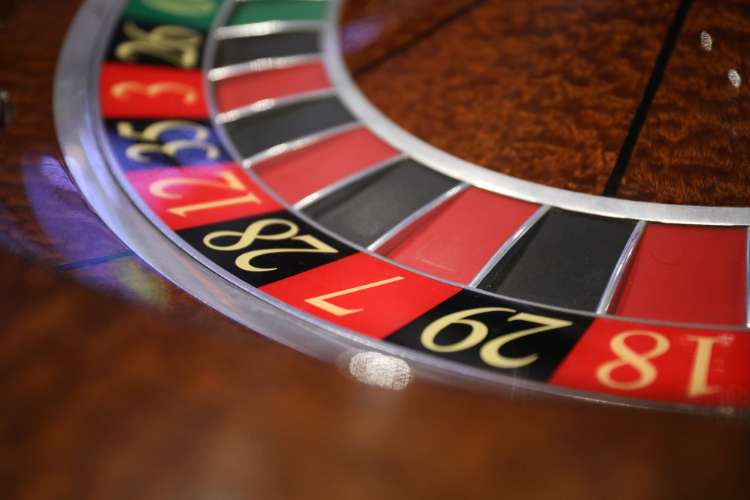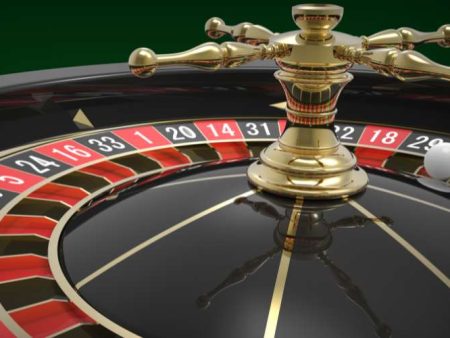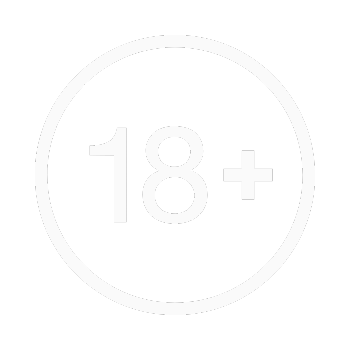
What's on this page
Roulette is one of the most exciting and fast-paced casino games, offering players a chance to test their luck and strategies on a spinning wheel. It’s a game that combines the thrill of chance with the strategy of betting, and it’s a favorite among UK players. But what happens when the game isn’t as fair as it seems? In this article, we’ll explore how to spot a biased roulette wheel, an issue that can undermine the fairness of the game. Understanding the history of roulette and how a wheel can become biased will help you stay alert and avoid losing out on a fair game. Whether you’re playing online or in a brick-and-mortar casino, it’s essential to know how to identify potential biases and ensure you’re playing a game based on luck, not a skewed wheel.
Understanding a Fair Roulette Wheel
A fair roulette wheel is one where every spin offers an equal chance for the ball to land on any of the numbers. In the classic roulette game, there are 37 numbers on a European wheel (0-36), and 38 on an American wheel (including 00). The randomness of the wheel’s rotation should ideally make each number equally likely to appear, giving players a fair shot at winning.
Over time, the game of roulette has evolved, and it has become crucial to ensure that the wheel is balanced and properly maintained. In any fair roulette game, the distribution of results should appear random over a long period, and each number should land approximately the same amount of times.
However, some roulette wheels are not perfectly calibrated, which can result in bias. A biased roulette wheel means that the wheel has a mechanical flaw or issue that causes certain numbers to land more often than others. This can significantly affect the fairness of the game and alter the odds in favor of the casino, leaving players at a disadvantage.
What Causes a Biased Roulette Wheel?
A biased roulette wheel is usually the result of mechanical or environmental factors that affect the spin or ball behavior. Let’s explore some of the common causes:
- Mechanical Issues: Over time, the physical components of a roulette wheel, such as the ball track, rotor, or frets, can wear down. Small changes in their shape or position can alter the way the ball lands, creating a bias toward specific numbers or sections of the wheel.
- Manufacturing Defects or Poor Design: A roulette wheel that isn’t manufactured correctly might have flaws in its balance, causing it to favor certain numbers. Even the slightest imperfection in the wheel’s structure can lead to an uneven distribution of results.
- Environmental Factors: Dirt, dust, or wear and tear on the wheel can create subtle imbalances. Also, external factors such as temperature, humidity, or vibrations from nearby machinery can influence the wheel’s performance and result in bias.
- Human Interference: In some cases, a dealer or maintenance staff may inadvertently alter the wheel’s alignment. It’s important to note that while most casinos and gaming establishments take extreme care to maintain fairness, issues can occasionally arise.
How to Spot a Biased Roulette Wheel
Now that we understand the causes, it’s important to know how to detect a biased roulette wheel. Here are a few tips to help you identify potential problems:
- Observing Ball Behavior: One of the easiest ways to spot a biased wheel is by observing the ball’s behavior. If the ball consistently lands in the same area of the wheel, it may indicate bias. Pay attention to any patterns that emerge as the ball is thrown. A truly fair wheel should have the ball landing randomly across different sectors.
- Wheel Irregularities: Take a close look at the wheel itself. If you notice visible wear or damage on certain sections of the wheel, such as grooves or marks, this could be a sign that the wheel is no longer balanced. Areas that look worn down may affect the ball’s movement and lead to biased results.
- Consistent Hot Spots: A biased wheel tends to have certain areas or numbers where the ball lands more frequently. These “hot spots” may not be immediately obvious, but if you track results over time, you might notice that some numbers or sections are hit more often than others.
- Recording Results: The best way to spot a biased roulette wheel is to record the outcomes of several spins. You don’t need to be obsessive about it, but by noting the results, you can look for any signs of statistical anomalies. If one number keeps coming up far more often than expected, it might be worth investigating further.
- Observing Dealer Techniques: While less common, the way a dealer spins the wheel can also affect its outcomes. Some dealers may consistently throw the ball in a way that biases the game, whether intentionally or unintentionally. Pay attention to how the dealer releases the ball—if they seem to be doing it the same way each time, it could affect where the ball lands.
Testing for Bias
If you suspect that a roulette wheel is biased, you can take steps to test it for fairness. Here’s how to conduct your investigation:
- Record the Results: Track the outcome of the spins for a substantial amount of time. Ideally, you should record at least 100 spins to get a clear picture of the wheel’s performance.
- Use Tools and Methods: There are apps and spreadsheets that can help you track the results more efficiently. You don’t need to do it manually, as technology can assist in organizing the data and spotting patterns.
- Look for Statistical Evidence: If you find that a certain section or number of the wheel is showing up more frequently than others, you may have found evidence of bias. In statistics, this is called a “skewed distribution,” and it’s a clear sign that the wheel is not functioning fairly.
- When to Stop and Report: If you notice consistent irregularities, it’s important to stop playing and report your findings to the casino. A reputable casino will take your concerns seriously and investigate the issue.
The Impact of Biased Wheels on Your Betting Strategy
When a roulette wheel is biased, it can significantly affect your betting strategy. Most players rely on roulette strategies like Martingale or Fibonacci, which are based on the idea of randomness. A biased wheel, however, can lead to predictability in the outcomes, making it easier to find hot spots or patterns.
If you’re able to spot a biased wheel, you may be able to adjust your bets accordingly. For instance, if you notice that a certain section of the wheel is favored, you could place more of your bets on those numbers. However, this approach carries risks, as the casino may adjust the wheel or ask you to stop playing if they suspect foul play.
In general, it’s important to remember that roulette is a game of chance. Even if you spot a biased roulette wheel, there’s no guarantee that you’ll be able to consistently win by betting on hot spots. Your best bet is always to enjoy the game responsibly and not rely on suspected biases for your overall strategy.
How to Protect Yourself from Biased Roulette Wheels
To avoid playing on a biased roulette wheel, here are some tips:
- Choose the Right Casino: Always play at licensed and reputable casinos that use regularly maintained and calibrated wheels. If you’re playing online, make sure the casino is regulated by trusted authorities like the UK Gambling Commission.
- Report Suspicious Activity: If you suspect a wheel is biased, report it immediately to the casino management or the regulatory body. A fair casino will take your complaint seriously and investigate the issue.
- Know Your Rights: As a player, you have the right to a fair game. If a biased wheel is detected, you may be entitled to a refund or compensation depending on the situation.
- Play Responsibly: No matter what, always play responsibly. The role of luck is huge in roulette, and no system or bias should make you forget the importance of controlling your gambling behavior.
Conclusion
Spotting a biased roulette wheel isn’t always easy, but with the right knowledge and observation, you can protect yourself from unfair games. It’s essential to keep an eye on the popular roulette variations you play and make sure the wheel is functioning properly. By being aware of the signs of a biased wheel, you can enjoy roulette in its purest form—random, exciting, and fair. So, next time you sit down to play, remember to trust your instincts and play responsibly. After all, the history of roulette has shown us that a fair game is the best game. Happy spinning!





